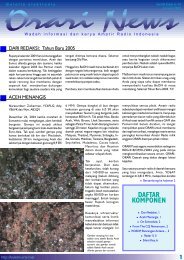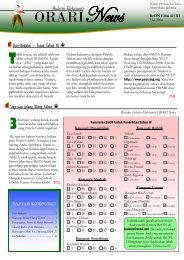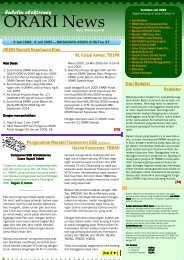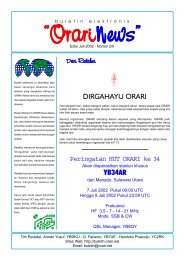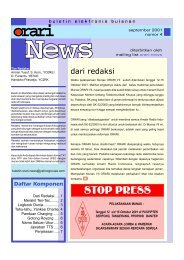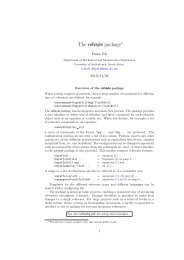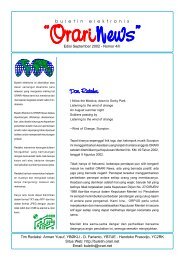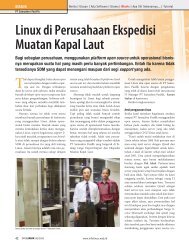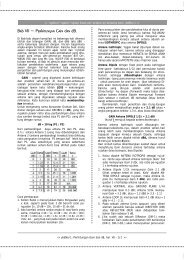You also want an ePaper? Increase the reach of your titles
YUMPU automatically turns print PDFs into web optimized ePapers that Google loves.
3.13.2 Correction of Parasitic Oscillations<br />
The usual self-oscillations in r-f power amplifiers have been found<br />
to fall in the following three classes:<br />
70<br />
(a) Oscillation at VHF from about 40 MHz to 200 MHz,<br />
regardless of the normal frequency of the amplifier.<br />
(b) Self-oscillation on the fundamental frequency of the<br />
amplifier.<br />
(c) Oscillation at a low radio frequency below the normal<br />
frequency of the amplifier.<br />
The low frequency oscillation in an amplifier usually involves the r-f<br />
chokes, especially when chokes are used in both the output and<br />
input circuits.<br />
Oscillation near the fundamental frequency involves the normal<br />
resonant circuits, and brings up the question of neutralizing<br />
the r-f power amplifier. This general subject is discussed under<br />
“Neutralization,” Section (5).<br />
When a parasitic self-oscillation is found on a very high frequency,<br />
the interconnecting leads of the tube, the tuning capacitor and<br />
the by-pass capacitors are involved. This type of oscillation<br />
does not usually occur when the power amplifier is designed for<br />
operation in the VHF region and where the r-f circuits external to<br />
the tube have negligibly small tuning capacitors. Without tuning<br />
capacitors, the highest frequency oscillating circuit possible is then<br />
the fundamental, and there would be no higher frequency circuit<br />
available for the parasitic. The only exception would be where<br />
higher order modes of transmission line circuits might provide a<br />
parasitic circuit.<br />
The VHF oscillation occurs commonly in amplifierconstructions<br />
where the radio frequency circuits are coils and capacitors, as in<br />
the HF and LF region, in audio amplifiers or voltage regulators.<br />
As in Figure 41, the parasitic oscillation uses the capacitors and<br />
the associated grid and anode leads for the inductances of the<br />
parasitic circuit. The tube capacitances help form the tuned-anode<br />
tuned-grid oscillation circuits. The circuit is indicated by the heavy<br />
lines in Figure 41.




